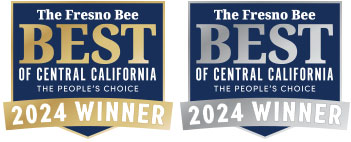What is OER?
Open educational resources are free teaching and learning materials that can be reused,
shared, and modified without first obtaining permission from the creator to do so.
Unlike traditional “all rights reserved” copyrighted materials, OER have been openly
licensed (or live in the public domain), which allows the creator to waive some the
copyright restrictions and make it more accessible and usable by the public.
At Lemoore College, our goal is to create as many Zero Textbook Cost (ZTC) courses
as possible. To achieve this, many faculty adopt OER and/or use a combination of free
resources, like those from Lemoore College Library or educational websites.
“What is OER” by The Council of Chief State School Officers is licensed CC BY 4.0
The 5 R’s of OER
Retain -- allows you to download, print, and retain copies of the OER
Reuse -- allows reuse and repurposing of the content
Revise -- allows one to modify or alter the content to better fit their needs
Remix -- allow the compiling of various OER into a brand new resource
Redistribute -- allows the sharing of the content in the original or altered format
Creative Commons
The most commonly used open licenses in the realm of OER are the Creative Commons licenses. Creative Commons is a non-profit organization that seeks to create a large body of knowledge in “The Commons” belonging to everybody.
“Creative Commons helps you legally share your knowledge and creativity to build a more equitable, accessible, and innovative world. We unlock the full potential of the internet to drive a new era of development, growth and productivity.” -CreativeCommons.org
Creative Commons has six licenses to choose from varying from very open to more restrictive. Visit the Creative Commons website to learn more about the ins and outs of each of these licenses.
The Public Domain
Another way that a resource can become an OER is if it has been released to the public domain, which is a body of creative works that belong to the public and are not restricted by any copyright or open license. There are two ways that a work can become part of the public domain:
- The copyright expires. In the US, you can assume most works will be protected by copyright for the life of the creator plus 70 years.
- The creator(s) waive all copyrights associated with their work and therefore put it in the hands of the public. Creative Commons has created a universal legal tool that allows creators to place their works into the public domain called CC0.
Why Choose OER?
Textbook prices continue to increase every year and students are required to buy the newest editions of textbooks and, sometimes, access codes that allow them access to digital textbooks and homework systems. OER allows instructors take take back control of their learning resources and eliminate textbook costs for students. Without worrying about whether or not they can afford to buy the required textbook(s) for their classes, students can gain access to their learning materials on day one. Here are some other benefits of using OER:
- Day 1 access increases student equity. Students using financial aid don’t have to wait for the check to come in to get started in class.
- Cost savings can improve students’ quality of life (e.g., rent, food, childcare, transportation), which can improve success and retention.
- Instructors control their course materials, not the publishers.
- 7 out of 10 student don’t purchase the textbook, according to The Chronicle of Higher Education (2011). With OER, students have access to all their learning materials and don’t have to try to pass a class without the textbook.
- Instructors can customize the course materials around their specific course outcomes instead of teaching from the textbook chapters.
- Students can download and keep the OER forever. No having to decide between selling it back to the bookstore or keeping it for future reference.
